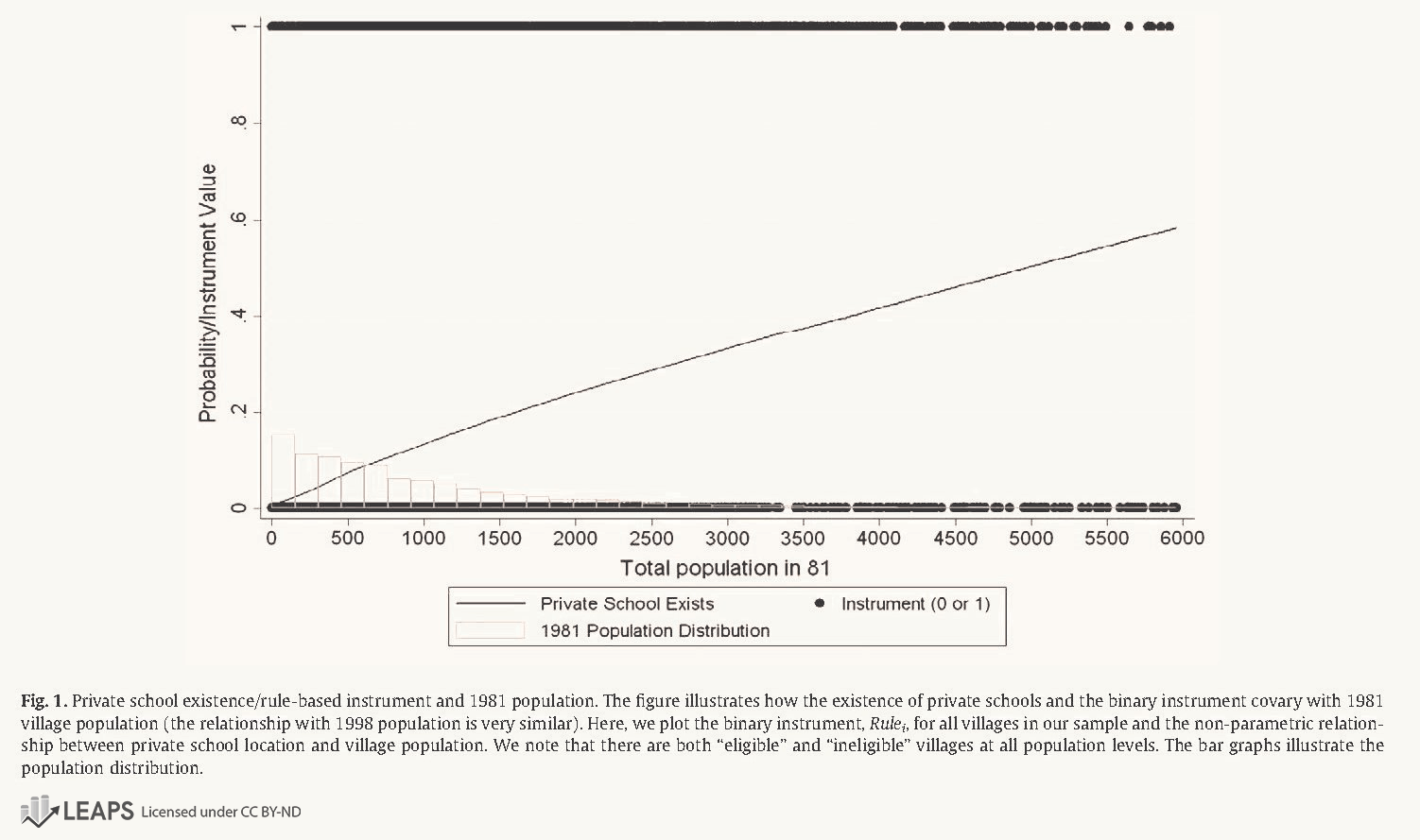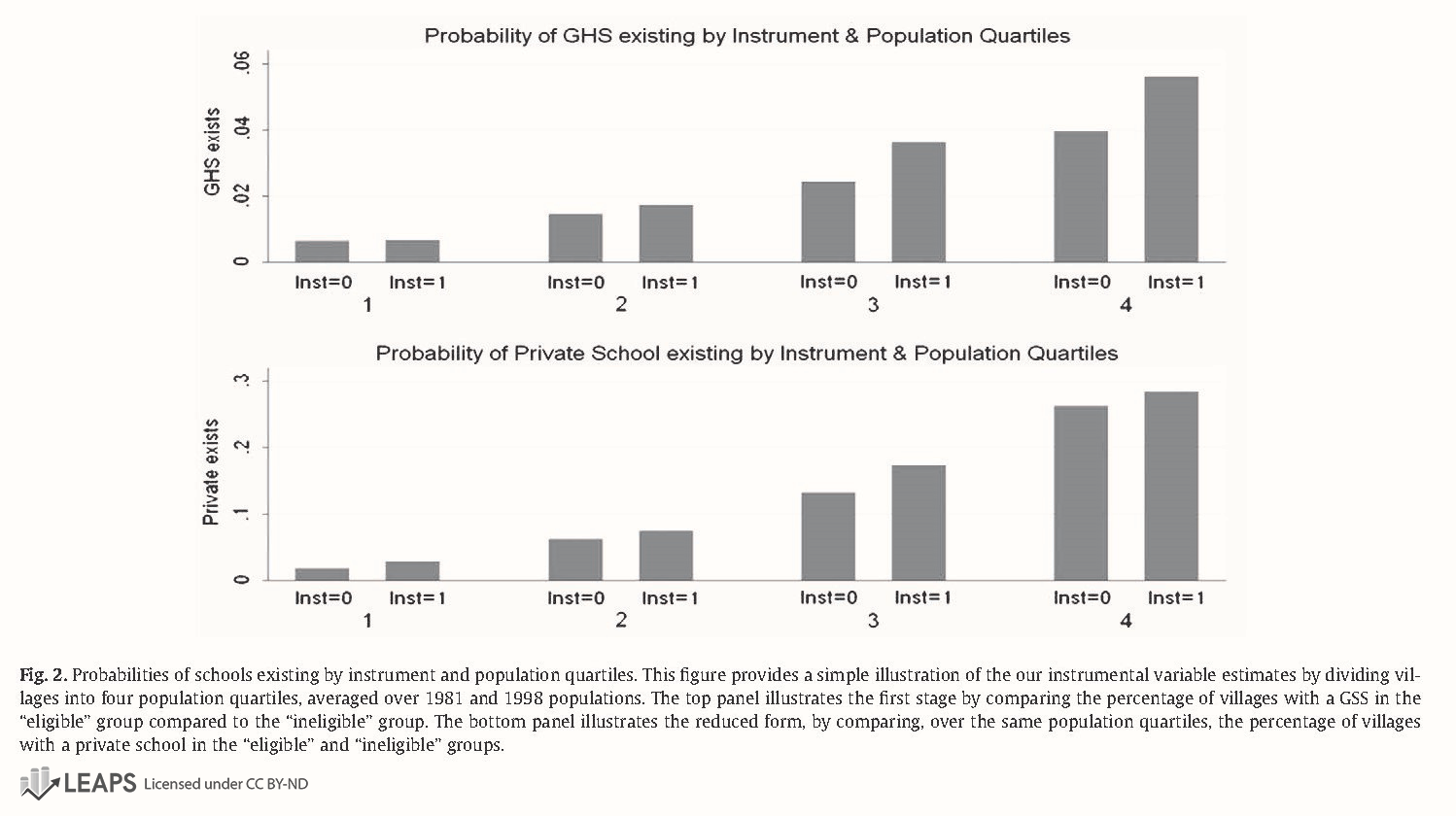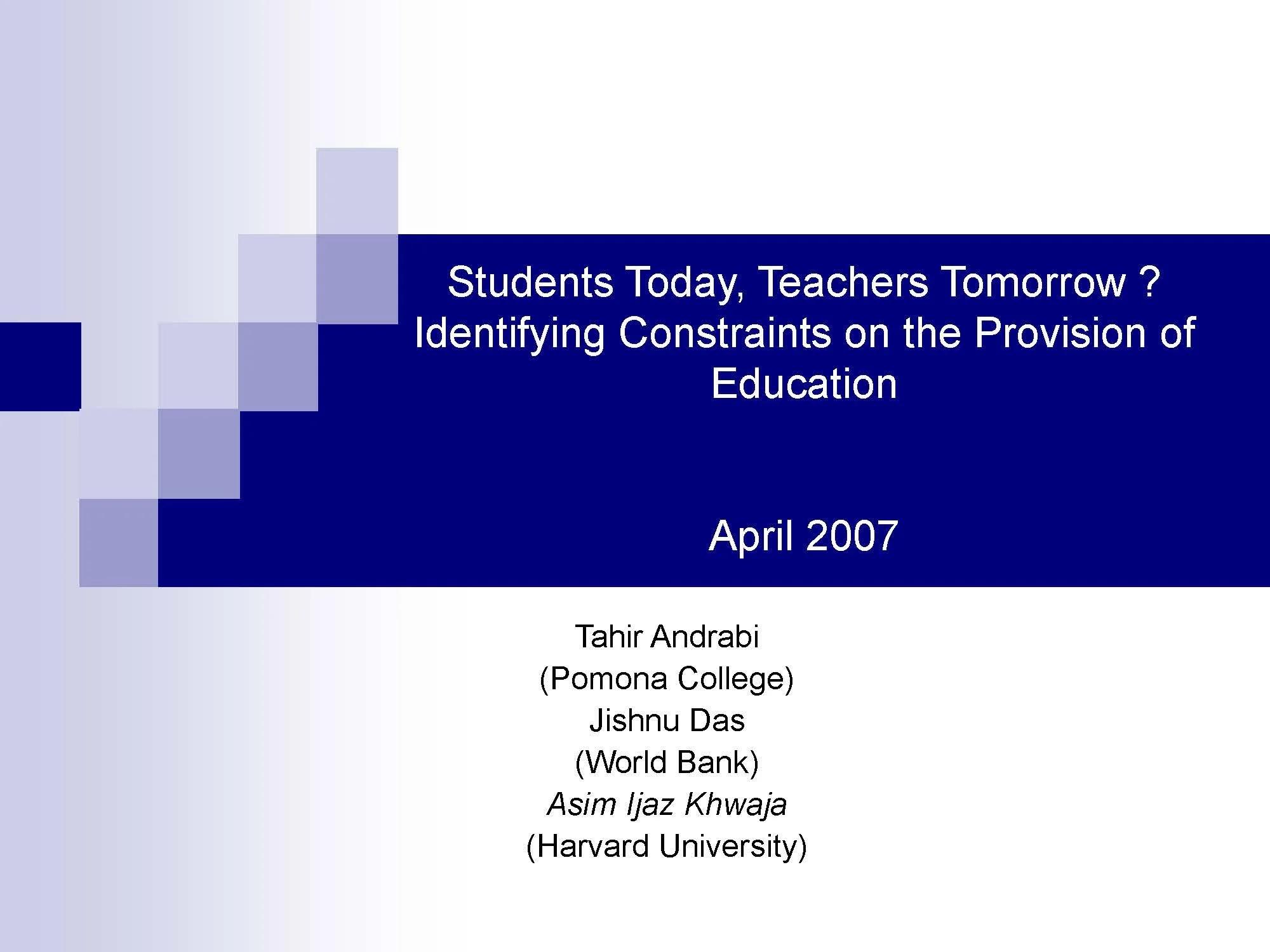Summary: With an estimated 115 million children not attending primary school in the developing world, increasing access to education is critical. Resource constraints limit the effectiveness of demand-based subsidies. This paper focuses on the importance of a supply-side factor—the availability of low-cost teachers—and the resulting ability of the market to offer affordable education. The authors first show that private schools are three times more likely to emerge in villages with government girls' secondary schools (GSS). Identification is obtained by using official school construction guidelines as an instrument for the presence of GSS. In contrast, there is little or no relationship between the presence of a private school and girls' primary or boys' primary and secondary government schools. In support of a supply-channel, the authors then show that, for villages that received a GSS, there are over twice as many educated women and that private school teachers' wages are 27 percent lower in these villages. In an environment with poor female education and low mobility, GSS substantially increase the local supply of skilled women lowering wages locally and allowing the market to offer affordable education. These findings highlight the prominent role of women as teachers in facilitating educational access and resonate with similar historical evidence from developed economies. The students of today are the teachers of tomorrow.
Tahir Andrabi
Jishnu Das
Asim Khwaja
Students Today, Teachers Tomorrow: Identifying Constraints on the Provision of Education
Citation: Andrabi, Tahir, Jishnu Das, and Asim I. Khwaja. 2013. “Students Today, Teachers Tomorrow: Identifying Constraints on the Provision of Education.” Journal of Public Economics, 100: 1-14.
A key supply-side constraint for universal primary enrollment is the availability of affordable teachers. Educationalists increasingly argue that there are severe teacher “shortages,” a concern that resonates with the challenges faced in designing incentives for teachers to move to rural areas and to exert greater effort. This paper provides the first evidence that public investments in secondary education facilitate future educational provision by increasing the local pool of potential teachers and therefore decreasing the cost of providing education. In other words, the students of today become the teachers of tomorrow.
Study Design and Findings
Girls’ government secondary schools (GSS) increase the emergence of private schools
We show that the construction of government girls secondary schools (henceforth referred to as GSS) in Pakistan had a large impact on the education market: It is estimated that villages where such schools were constructed are 27 percentage points or three times more likely to see private primary schools emerge in the following years. To obtain these estimates, we use an indicator for whether a village has the highest population among all its neighbors as an instrumental variable, based on girls’ government secondary school construction guidelines. Since two villages with equal populations may differ in whether they have the largest population in the vicinity, the instrument provides substantial variation even after controlling for polynomials in village population.
GSS augment local teacher supply in villages where they are constructed
We argue that GSS construction impacts private primary school location because it augments local teacher supply in an environment with low female geographical and occupational mobility. In support of a “women as teachers” supply channel, we document that: (a) private provision is affected only by GSS construction (girls' primary or boys' primary/secondary schools have little effect); (b) having a GSS more than doubles the number of women in the (median) village with secondary or higher education; and (c) the fraction of secondary educated females in a village has a large impact on private educational provision, while the fraction of similarly educated men does not.
Private school teacher wages are also lower in these villages
Furthermore, we show that private school teachers' wages are 27% lower in villages with a GSS. With teacher wages accounting for close to 90% of the operational costs of private schools, this lower wage in GSS villages offers a substantial cost advantage. This result is consistent with the supply-side explanation that we suggest for the mechanism at hand. Moreover, consistent with the hypothesized mechanism, we find that this wage drop is higher in villages with more restricted female labor markets as proxied by village development indicators and sex-ratios.
Overall, this paper highlights a potential virtuous cycle of human capital accumulation. We provide evidence that over time, public capital investments can '“crowd-in” subsequent private capital. The evidence of crowd-in and supply-side constraints cautions against over-optimism regarding market educational provision and, in doing so, provides a clearer rationale for the public sector's role, which is especially important given the prevalent pessimism surrounding public sector provision. To the extent that the public sector can alleviate binding supply constraints, evidence suggests that the longer-term impacts likely represent more than a sectoral realignment of children from public to private schools; and instead reflect an overall improvement in the level of educational provision. and increased educational quality.
Study Resources
The following resources are for public use in presentations, papers, lectures, and more under the Creative Commons license BY-ND. Click the images below to view or download individual images, or use the button to download all.
As a condition of use, please cite as: Andrabi, Tahir, Jishnu Das, and Asim I. Khwaja. 2013. “Students Today, Teachers Tomorrow: Identifying Constraints on the Provision of Education.” Journal of Public Economics, 100: 1-14.









